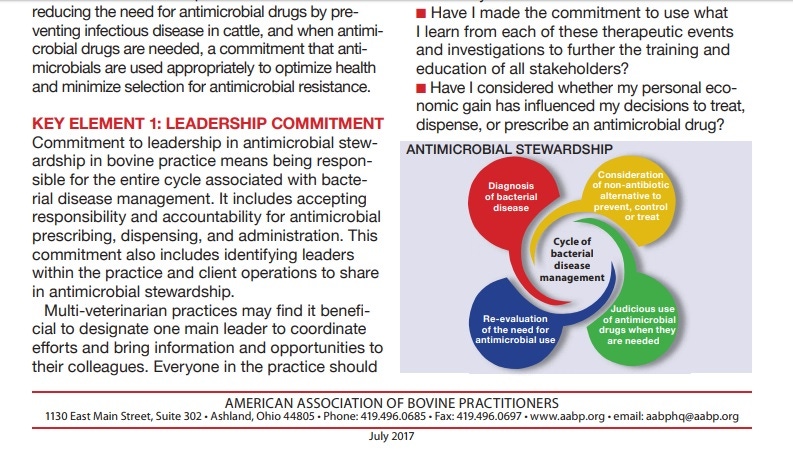Antimicrobial stewardship guidelines available from AABP
Information on best practices for antimicrobial stewardship on beef and dairy operations.
October 6, 2017

The American Association of Bovine Practitioners (AABP) has created a new document called “Key Elements for Implementing Antimicrobial Stewardship Plans in Bovine Veterinary Practices Working with Beef and Dairy Operations.”
Its purpose is to provide bovine veterinarians with best practices for designing, implementing, and monitoring antimicrobial stewardship programs with their clients, says Dr. Virginia Fajt, veterinary pharmacologist at Texas A&M University.
Fajt chaired the special AABP task force to craft these guidelines. The task force included veterinary and pharmacology experts in the feedlot, cow-calf and dairy sectors. She says the intent is also to provide elements to help beef and dairy operations to reduce the need for antimicrobials and to use them appropriately when necessary.
“These guidelines include some of the key components from the elements of antimicrobial stewardship in human medicine published by the Centers for Disease Control and Prevention,” she adds. “Additions and modifications were made so the elements are practical and applicable to bovine practice.”
The guidelines say antimicrobial stewardship is a commitment to reduce the need for antimicrobial drugs by preventing infectious disease in cattle. Further, they say, when antimicrobial drugs are needed, a commitment that antimicrobials are used appropriately to optimize health and minimize selection for antimicrobial resistance.
These guidelines begin with emphasis on preventing the need for using antimicrobials whenever possible, followed by approaches to assuring judicious use of antimicrobials when they are required, says AABP President Dr. Mike Apley, a veterinary pharmacologist from Kansas State University. They are intended as a guide to the process, not a formulary.
5 key elements
The guidelines are divided into five key elements. Each one is further described in the guidelines:
Leadership -- Commitment to leadership in antimicrobial stewardship in bovine practice means being responsible for the entire cycle associated with bacterial disease management, including identifying leaders within the practice and client operations to share in antimicrobial stewardship.
Drug expertise-- It is the responsibility of the veterinarian to continuously seek new information about the use of antimicrobial drugs. This may take the form of consulting infectious disease specialists, attending professional continuing education opportunities, searching for and reading peer-reviewed published research, or reviewing rigorously conducted knowledge summaries.
Tracking antimicrobial drug use – Bovine practitioners should periodically review treatment records, drugs present on the farm in relation to treatment protocols, and on-farm antimicrobial drug dispensing and usage. This requires appropriate record systems.
Reporting -- Bovine practitioners should support efforts to report antimicrobial drug use across farms in order to benchmark and compare usage, while maintaining client confidentiality.
Action -- Stewardship programs require action in addition to monitoring and tracking. Stewardship leaders should review activities and recommend appropriate actions on a regular basis.
The new guidelines can be found at http://aabp.org/resources/AABP_Guidelines/AntimicrobialStewardship-7.27.17.pdf, and are available to members and the public.
Additional AABP guidelines, can be found at http://aabp.org/about/AABP_Guidelines.asp.
Source: AABP
You May Also Like


.png?width=300&auto=webp&quality=80&disable=upscale)
